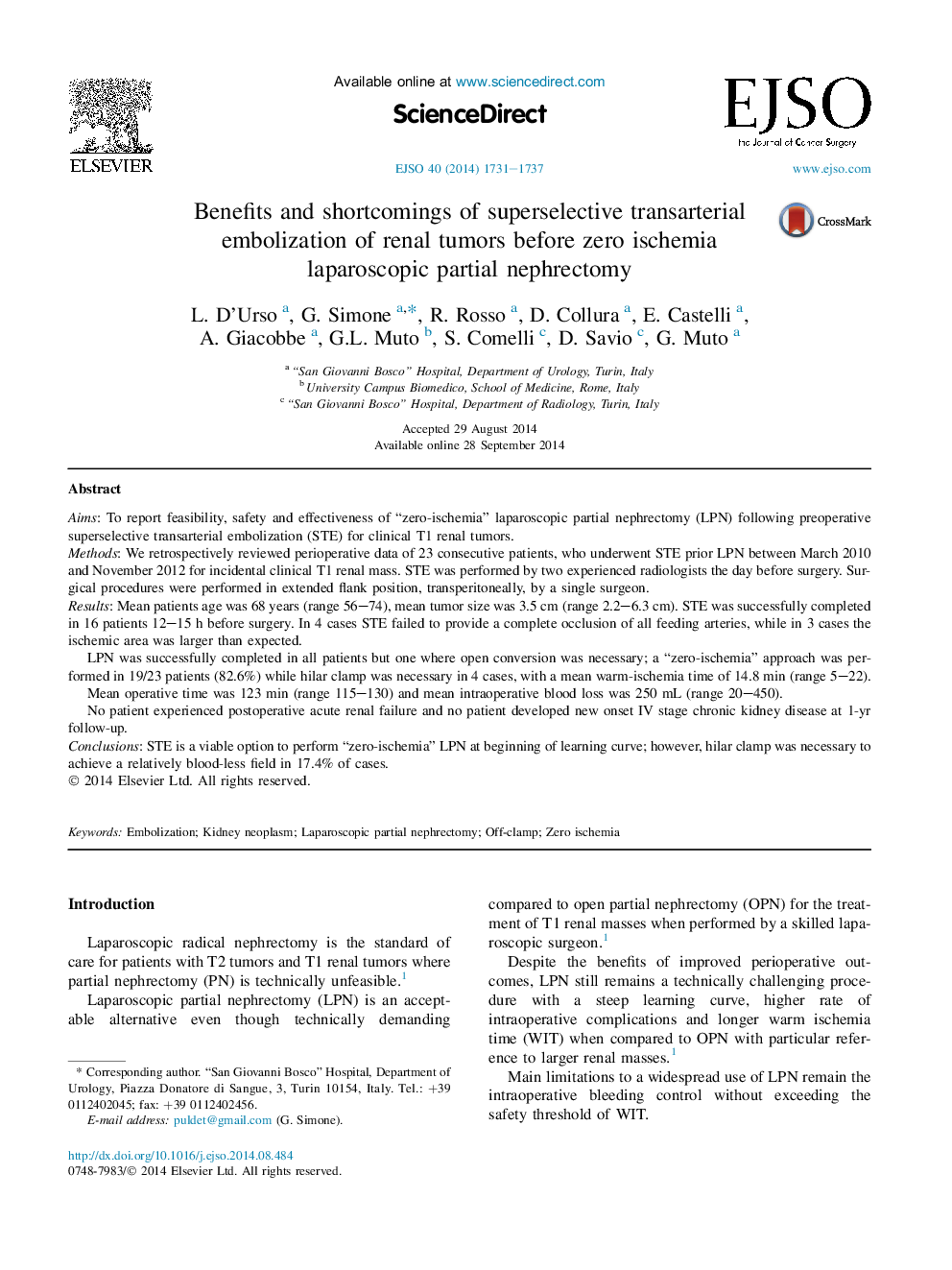| Article ID | Journal | Published Year | Pages | File Type |
|---|---|---|---|---|
| 3984939 | European Journal of Surgical Oncology (EJSO) | 2014 | 7 Pages |
AimsTo report feasibility, safety and effectiveness of “zero-ischemia” laparoscopic partial nephrectomy (LPN) following preoperative superselective transarterial embolization (STE) for clinical T1 renal tumors.MethodsWe retrospectively reviewed perioperative data of 23 consecutive patients, who underwent STE prior LPN between March 2010 and November 2012 for incidental clinical T1 renal mass. STE was performed by two experienced radiologists the day before surgery. Surgical procedures were performed in extended flank position, transperitoneally, by a single surgeon.ResultsMean patients age was 68 years (range 56–74), mean tumor size was 3.5 cm (range 2.2–6.3 cm). STE was successfully completed in 16 patients 12–15 h before surgery. In 4 cases STE failed to provide a complete occlusion of all feeding arteries, while in 3 cases the ischemic area was larger than expected.LPN was successfully completed in all patients but one where open conversion was necessary; a “zero-ischemia” approach was performed in 19/23 patients (82.6%) while hilar clamp was necessary in 4 cases, with a mean warm-ischemia time of 14.8 min (range 5–22).Mean operative time was 123 min (range 115–130) and mean intraoperative blood loss was 250 mL (range 20–450).No patient experienced postoperative acute renal failure and no patient developed new onset IV stage chronic kidney disease at 1-yr follow-up.ConclusionsSTE is a viable option to perform “zero-ischemia” LPN at beginning of learning curve; however, hilar clamp was necessary to achieve a relatively blood-less field in 17.4% of cases.
